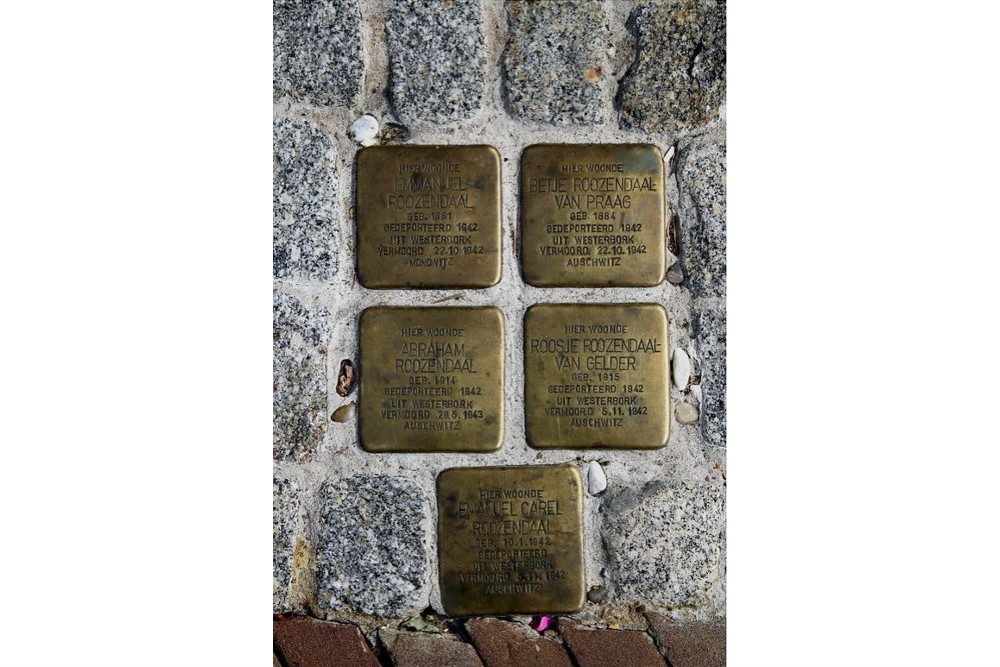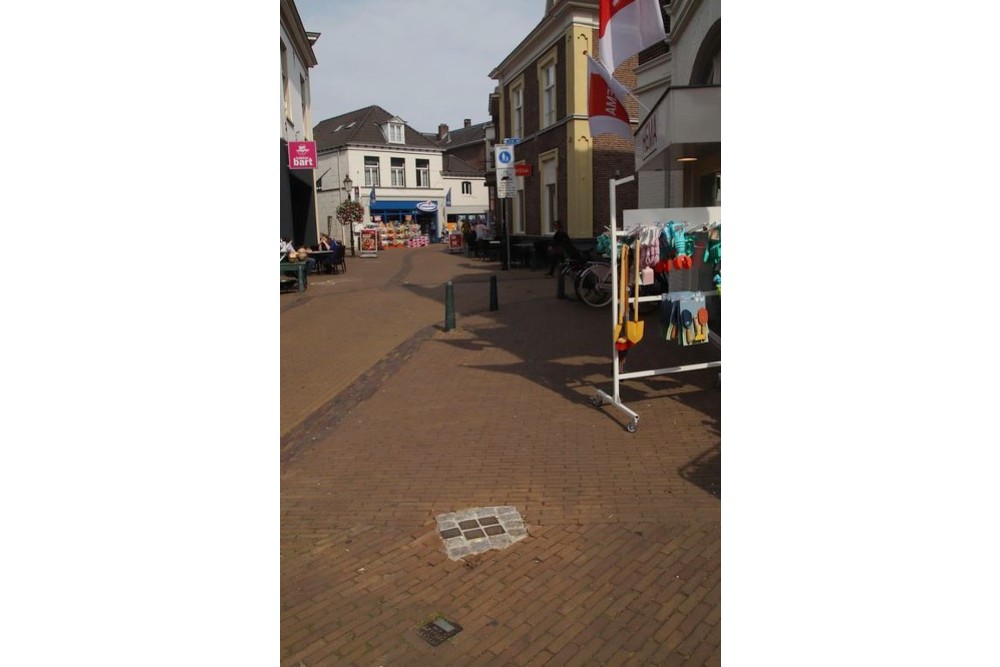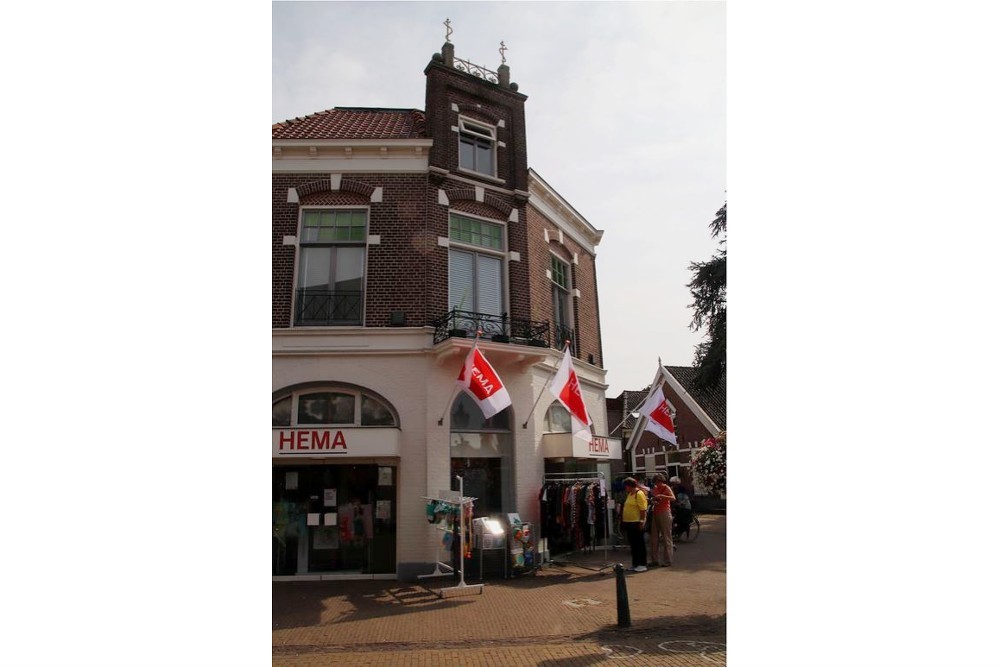Stumbling Stones Smeestraat 1
These small, brass, memorial plaques (stolpersteine, struikelstenen, or stumbling stones) commemorate:
* Emmanuel Roozendaal, born 1881, deported 1942 from Westerbork, murdered 22 October 1942, Monowitz.
* Betje Roozendaal-van Praag, born 1884, deported 1942 from Westerbork, murdered 22 October 1942, Auschwitz.
* Abraham Roozendaal, born 1914, deported 1942 from Westerbork, murdered 28 May 1943, Auschwitz.
* Roosje Roozendaal-van Gelder, born 1915, deported 1942 from Westerbork, murdered 5 November 1942, Auschwitz.
* Emanuel Carel Roozendaal, born 1942, deported from Westerbork, murdered 5 November 1942, Auschwitz.
Background
Emmanuel Roozendaal and Betje van Praag married in 1913 in Amsterdam.
Their son Abraham married Roosje van Gelder, and they lived together in Lochem with their baby, Emanuel Carel. One source says Abraham and his family were at ‘t Ei 1, but another source says they lived upstairs, above his parents here at Smeestraat 1.
They were all deported from Westerbork in 1942. Emmanuel and Betje Roozendaal were taken to Monowitz or Auschwitz and murdered there on the same day in October. Less than a month later, Roosje Roozendaal and 9-month-old Emanuel Carel Roosendaal were murdered together in Auschwitz. Abraham Roozendaal spent 5 months in forced labor before he, too, was murdered in Auschwitz.
"Stolpersteine" is an art project for Europe by Gunter Demnig to commemorate victims of National Socialism (Nazism). Stolpersteine (stumbling stones) are small, 10x10cm brass plaques placed in the pavement in front of the last voluntary residence of (mostly Jewish) victims who were murdered by the Nazis. Each plaque is engraved victim’s with the name, date of birth, and place (mostly a concentration camp) and date of death. By doing this, Gunter Demnig gives an individual memorial to each victim. One stone, one name, one person. He cites the Talmud: "A human being is forgotten only when his or her name is forgotten."
Do you have more information about this location? Inform us!
Source
- Text: Anne Palmer
- Photos: Suzanne Matrosov-Vruggink (1), Suzanne Matrosov-Vruggink (2), Suzanne Matrosov-Vruggink (3)
- Joods Monument
- Stichting Stolpersteine Lochem: Steenleggingen
- Stolpersteine.eu
Nearby
Museum
Point of interest
- Information Sign Liberation Lochem - Lochem
- V1 Fallback Ampsen - Lochem
- Bomb Crater And Bomb Shrapnel - Markelo
Monument
- Memorial Lochem - Lochem
- Memorials Synagogue Lochem - Lochem
- Memorial Somerset, 43rd Wessex Division - Lochem
Cemetery
- Commonwealth War Graves General Cemetery Lochem - Lochem
- Dutch War Graves Lochem - Lochem
- Commonwealth War Graves Barchem - Barchem
Remembrance Stone
- Stumbling Stones Doctor Rivestraat 6 - Lochem
- Stumbling Stones Oosterwal 26 - Lochem
- Stumbling Stone Nieuwstad 3 - Lochem







